Travel Guide to Brazil – A Travel Guide to Brazil Made Easy
Updated As of read 7 min
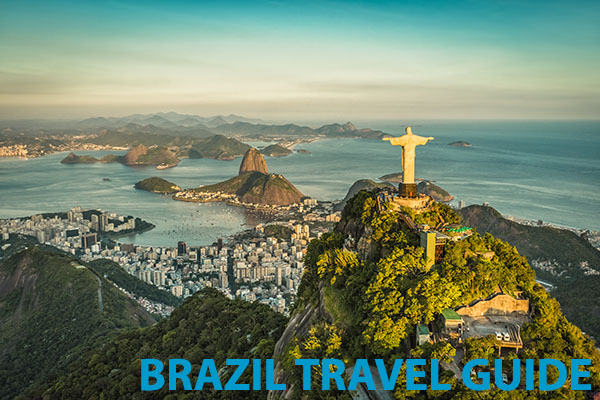
Home to the largest country in South America, the world’s largest tropical rainforest, a portion of the Amazon River, and Carnival festival, Brazil is a place every adventurous traveler needs to visit. Brazil is considerably more significant than the contiguous United States and one that has such a rich history. These facts prove there is something to offer for every type of traveler.
From 7500 kilometers of tropical beaches to untouched jungles, from famous street food to decadent desserts, there is far more to Brazil than the beautiful women and the Rio Carnival that receive much of the media’s spotlight. The best part is that for a U.S. citizen to travel to Brazil does not require a visa for stays up to 90 days. So book your ticket, and let’s iron out some of the details of your trip with the ultimate travel guide to Brazil.
Where to Go
As the largest country in South America, Brazil offers a lot of locations for travelers to visit and explore. Brazil encompasses around half of South America’s land area and population, thus there is an extensive list of places to go and things to see. Some of the most popular areas are Rio de Janeiro, Costa Verde, São Paulo, Salvador, the Amazon, Belém, Manaus, and Natal to name a few.
Rio de Janeiro
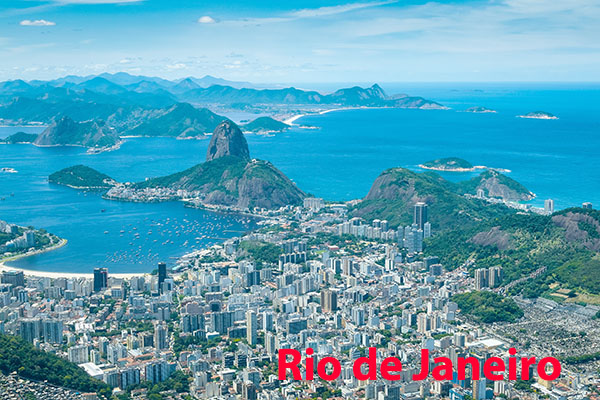
The city of Rio de Janeiro is a must-see spot in Brazil and is heavily visited. Each year the city hosts over 6 million tourists, and the number is expected to increase! The town plans about 1.1 million foreign tourists for their annual Rio Carnival that is only four days long from February 24-28 for the 2017 year.
Rio de Janeiro has a great style that you can genuinely the only experience in this magical city. Of course, Rio has some of the highest landmarks in the world like Chris the Redeemer as well as Sugar Loaf mountains and the essential lengths of sand beaches on the planet.
Each year Rio hosts their Carnival, which is gaining national recognition and a highlight for tourists planning their vacations. The festival takes place in February each year, as the specific dates differ, the vibe of the fest does not. Visitors can expect the very best in music, culture, food, and energy from the Rio de Janeiro Carnival.
Costa Verde
With a captivating panorama of bays, coastline, islands, peaks and waterfalls its no wonder why tourists dream of visiting Costa Verde. Commonly known as the ‘Green Coast,’ the Costa Verde is west of Rio and offers both historical and visually appealing sites. In the 18th century, Caminho do Ouro (Gold Trail) once used to transport gold from Brazil’s interior to the coast.
Costa Verde is also home to Mata Atlântica, the Atlantic rainforest, and a jungled mountainside that makes for an adventurous island day trip for those visiting Rio. A bus connects Rio to the tropical coastal paradise that is Costa Verde.
Salvador
One of the oldest cities in the Americas is still Brazil’s third largest city and a site worth seeing! Due to its location on the coast of the Bay of All Saints, Salvador offers the best in beaches in Brazil such as Porto de Barra, Flamengo, and Stella Maris. Visitors come here to take part in activities like surfing, swimming, and catching some sun.
Salvador is also an old, charming city that is known for its Portuguese colonial architecture. With cobblestone alleys leading up to baroque style churches and gilt woodwork perched onto large colorful squares, Salvador offers a one of a kind site to see. The Historic Center provides a unique history lesson with monuments from the 17th to 19th century as it was the first colonial capital of Brazil.
What to Do in Brazil
Explore the Amazon Via River Boat
We all know Brazil is home to the world’s most extensive river system on the planet: The Amazon River. Riverboats in Brazil are like busses of the Amazon. They serve a vast network of places that connect both major and minor settlements. Riverboat trips are both long and short-term depending on what you want to get out your trip.
While this is an exciting choice for the adventurous traveler, there is a great deal of research that should be conducted before embarking on the journey. You will need to purchase items like a hammock, rope to hang your hammock, a mosquito net (depending on what route you take), and other materials you may not have.
Many boats go on the following routes, though are subject to change duration and direction: Manaus-Belém via Parintins, Óbidos and Santarém (four days); Manaus-São Gabriel da Cachoeira via Barcelos and Santa Isabel (six days); Manaus- Porto Velho via Manicoré and Humaitá (four days); Manaus-Tefé (36 hours); Manaus- Parintins (20 hours); Manaus-Tabatinga (six days); Belém-Santarém (two to three days); Belém-Macapá (36 hours); Macapá-Manaus (seven to 10 days).
Christ the Redeemer
Cristo Redentor, or as we know it in the western world Christ the Redeemer, is a spot that visitors must see while in Brazil. With his arms outstretched 28 meters, a figurative way to encompass all of humanity, this monument is one of Brazil’s most recognized icons.
Visiting Christ the Redeemer is both magical in its presence, but also in the hike up to the 709-meter monument. He stands in the Tijuca National Park that is also a sight to see. Christ the Redeemer has been standing tall since its creation in 1931.
Natural Landscapes and the Iguaçu River
Brazil is home to some of the unique landscapes both in its beaches, and it’s in the mountains. However, the sight to behold is the point where Brazil, Paraguay, and Argentina meet: The Iguaçu River. The area is a semicircle of 247 waterfalls that fall into the gorge in the earth below and is a sight to behold. As a UNESCO World Heritage Site, the Iguaçu National Park is home to over 1,000 different species of birds and mammals and waterfalls that are over some 100 meters.
Brazilian Cuisine
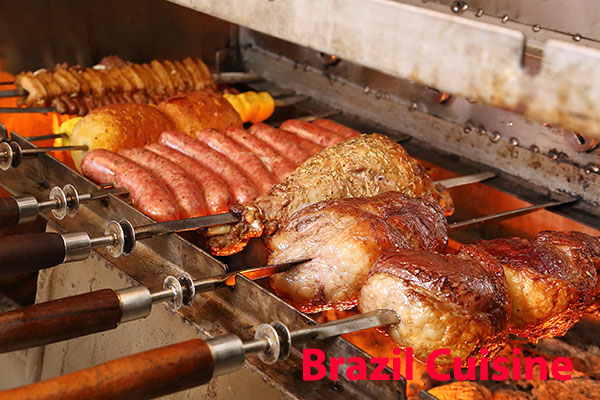
Much like the country itself, Brazilian cuisine is also a perfect combination of the beautiful variety of cultures that make up Brazil in its extensive history. As the largest country in South America, there are so many influences that inspire food options in Brazil. From the colonization by the Portuguese people in the 16th century, there are elements of Italian, the Spanish, the Arabs, and the Chinese and Japanese in Brazilian dishes.
Feijoada
A dish that is unique to Brazil is the Feijoada. It was invented by the African slaves who worked in estates and plantations in Brazil. Today it is a recipe of a thick black bean stew that is served with rice and a variety of pork meats. The slaves had it as a primary bean stew, but additions since have been made. The Portuguese then added the sausage, and the native Indians added the farofa, which is toasted manioc flour.
Barbecued Meat
Yup, you read it right both Brazil claims to be one of South America’s best at BBQ meat! However, Brazilians enjoy preparing these by using premium cuts of meat, typically picanha or rump cap, and season them only with a dash of salt before being grilled. Usually, Brazilians will cook over charcoal, but wood is also used in a more old-fashioned Southern style.
Pao de queijo
This dish is less intimidating for foreigners as it is mostly cheese and bread. Pao de queijo is enjoyed at all times of the day but typically is a snack food. It can be found on the streets made fresh as ‘street food.’ The perfect pao de queijo will be crispy on the outside and soft and chewy on the inside! (Yes, there are gluten-free options for this dish!). A delicious addition can be to increase the size of it and stuff it with more variations of cheeses and meat fillings.
Brigadeiros
A traditional Brazilian dessert that cannot have an adverse review of a native is a brigadeiros. This is Brazil’s version of a chocolate truffle and is made by simmering condensed milk with cocoa powder then whisking it in butter and shaping them into balls. The brigadeiros are completed by rolling it around in chocolate sprinkles, as the final step.
Açaí (pronounced a-sa-ee)
The western world’s foodie media has blown up in 2017 over the Acai bowl, though they are late to the trend. Pronounced ‘a-sa-ee’, the Acai is originally from Brazil and was traditionally eaten by indigenous tribes for energy from local berries and super-foods. The Acai bowl was particularly popular in the 80’s when it was advertised as an essential snack for surfers in Rio de Janeiro to give them energy. Acai can be found in nearly every café, bakery, juice bar, and supermarket across the country!
Brazilian Language
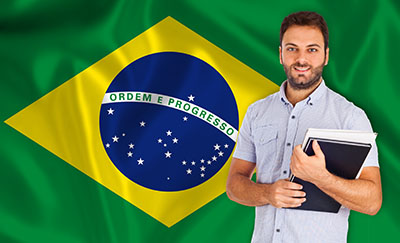
Much of what influences Brazilian culture is from their dynamic history with other countries.
Due to the mass Portuguese settlements throughout the 16th, 17th, and 18th century, the official language is Portuguese. However, English is widely spoken as their home is a significant tourist destination. A minority of settlers in Brazil are indigenous people and immigrants who still speak their native tongues.
Brazilian Culture
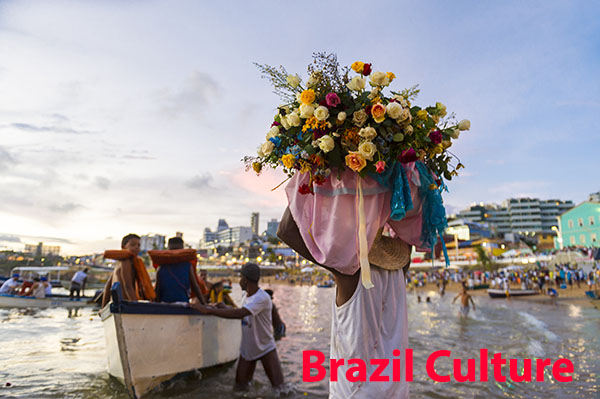
As a result of an extensive history of European domination, slavery bringing many African slave migrants throughout Brazil, and ancient Brazilian customs and ideas, the Brazil we see today is very diverse in its culture. Today there are about 190 million inhabitants that range significantly in their decent. Nearly 80% of the Brazilian population is of the Roman Catholic faith.
As a nation, Brazilians values fall on the importance of family and hospitality. Typically Brazilian families are large, and they pride themselves on this. Reception is also a trait that the Brazilians boast as they are very kind, giving people.
Brazilian Currency
The R$, or the Brazilian Real, is the currency of Brazil. The symbol R$ is the national currency symbol and the currency code for the Real is BRL. It is proven that the most popular exchange rate is the BRL to USD rate.
When to go to Brazil
Honestly, there is no “best time” to visit Brazil as it is an enormous country that offers many excursions, historical monuments, and gorgeous landscapes to see. It is helpful to know that rainfall is typically the greatest from December to May and the lowest in July. Some visitors plan this strategically to either soak in all the sun or to visit when the forests are flooded. When the woods are flooded, visitors can see primates, river dolphins, and plenty of bird life come alive in the forest.
The coast from Belém to Rio is sunny, and the northernmost beaches are typically always warm. Geographically speaking, the southern winter runs from July until September. At this time the temperatures can get as low as 50F (10C) in July! It’s imperative to align what your desires are to accomplish on your trip with the weather as it varies significantly from the western world’s seasons.

